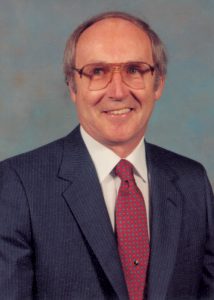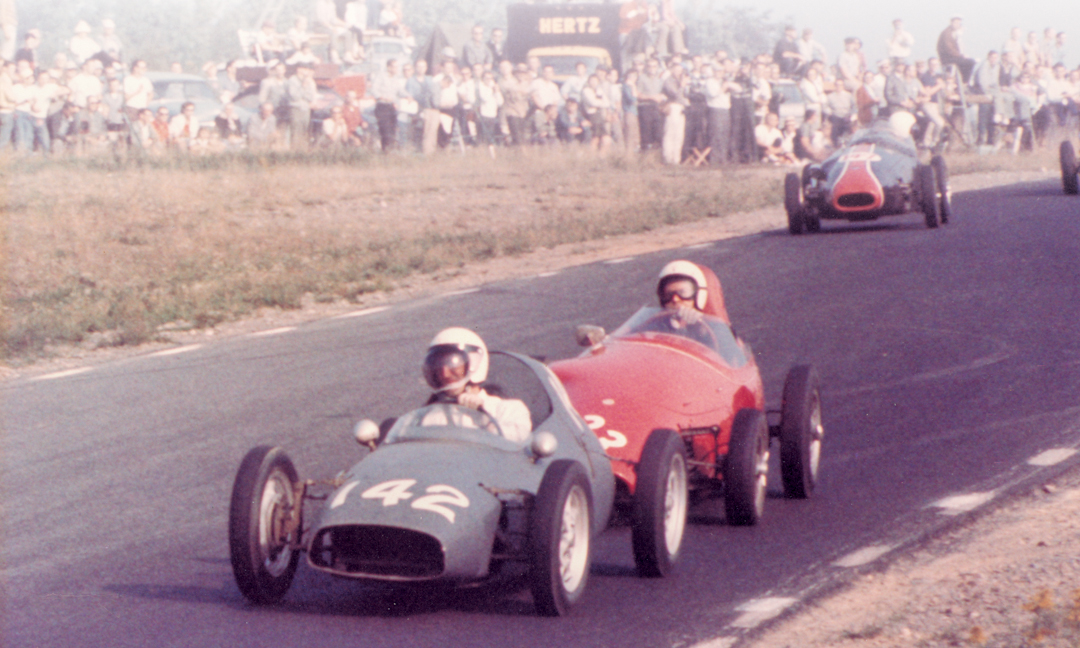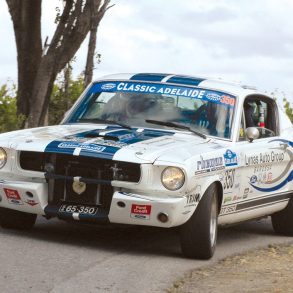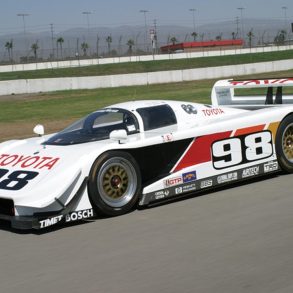John Zeitler – driver, engine builder, racecar designer and manufacturer – had a racing career spanning over 20 years, most of it involved with Volkswagen-powered cars. Casey Annis recently spoke with Zeitler to find out how it all came about.
VRJ: How did you get started in racing?
Zeitler: In 1952, I bought my first sports car, a MG TD and drove it from South Bend to Watkins Glen to see my first race. Next came a Jaguar XK 120 in 1954, and by 1958, I was racing a MGA.
VRJ: What drove you to build your own racecars?
Zeitler: Well, it didn’t take me long to learn that it was not wise to race the car I drove on the street (the MGA). Having studied Design Engineering, in 1958, I decided to build a 750 cc rear-engine sports racer. The only rear-engined cars at the time were Porsches and Coopers. In 1959, with the help of a sponsor, I purchased an Elva 1100 cc front-engined sports racer. But my company moved me from Williamsport, Pennsylvania, to Marblehead, Massachusetts and I lost my sponsor. Therefore, it was back to building my own car again. In the fall of 1959, I saw my first Formula Junior at Watkins Glen and heard there would be a class for them in 1960. So I set about building a rear-engined Formula Junior. I bought a very, very used Cooper Formula frame and running gear – no engine or gearbox – to use as a starting point. This was the first rear-engined Junior. I saw a magazine article about a hill climb champion in Europe that was using a DKW engine. So, I started writing to him, and he gave me a lot of information on how to get more power from the DKW and sold me a cylinder head and intake manifold. I also used the DKW gearbox and thus the Zeter MK I was born.
VRJ: How did you do in the car?
Zeitler: The old Cooper frame was a bad idea. It had so much twist that the car would lift the inside front wheel in a tight turn. However, I learned to drive it, and it was so fast on the straights that I managed to win some races running against the best from Europe. Eventually, I crashed and totaled the car in a hill climb after the end of the road racing season. The worst part was that I had already set fastest time in my second run and didn’t need the third run! That was the end of the Zeter Mk I.

VRJ: What did you do next?
Zeitler: In November 1960, I started work on the Zeter Mk II. One problem with the first car had been the wheels and tires. It had 15-inch wheels with 4.25 tires on the front and 5.50 on the rear. Not much rubber on the road compared to the new wide rims and tires coming from England. The widest 13-inch wheel I could find was from the Borgward, which is what I ended up using along with Borgward-finned aluminum brakes. Based on the winning performance of the MK I and without seeing a completed car or knowing the cost, I had orders for three Mk II’s, so I set about building four of them. They were all ready in the spring of 1961. These cars used a Porsche gearbox that had better ratios than the DKW. The price of the new cars was $2800. As Formula Junior was becoming a “car of the month” class, the cars soon became uncompetitive and the class eventually came to an end.
VRJ: At what point did your attention shift to Volkswagen-powered cars?
Zeitler: Well, I have always been a Formula car person, and when Formula Junior died, where else was there to go to race an open-wheel car on a budget except Formula Vee. It seemed the thing to do at the time. I was working for Bendix and living in Connecticut then. At that time, the original Autodynamics company went bankrupt and a bank in New Haven, CT, had taken possession of the assets – a bunch of incomplete Autodynamics Formula Vee kits essentially. They hired Bill Scott to sort it all out and I bought a frame, body and assorted parts and built an Autodynamics Vee, which I ran in 1964. After running the car for a season, I decided that I could build a better car myself and took a week vacation from Bendix, went up to Massachusetts to a friend’s metal shop and made the chassis for the first Zeitler Formula Vee. The shop then made a jig to produce frames so I could go into production. I cut up the Autodynamics body to make the prototype Zeitler body and had another friend who worked in fiberglass make a mould. That first car of mine was blue, but ever since then my personal cars and team cars have always been yellow or had yellow in the color scheme. That year we started producing kit cars that sold for $1900. Between 1965 and 1971, I sold over 40 Formula Vee cars.
VRJ: How did the cars perform?
Zeitler: Well, they ran pretty well. In 1966, we flew two cars to California to compete in the SCCA championship held at Riverside and finished third and fourth. In the Northeast, in the late 60’s, Tom Davey drove one of my cars and was a consistent front runner and winner.
VRJ: How did you get involved in the creation of the Super Vee series?
Zeitler: In the fall of 1969, Jo Hoppen called a meeting of all Formula Vee builders at Volkswagen of America to talk about the future of the class. There was a lot of talk about using the latest 1500 or 1600 VW engine in Vees. I suggested we keep the Vee class as it was and start a new Super Vee class. These cars would use the latest Volkswagen components, thus giving us better suspension and better brakes to go along with more power. The president of VOA said that this was the best idea he had heard, so Jo grabbed the ball and ran with it. He asked me to work on some rules and asked each of us if we would be willing to build a car for the new class. Jo went to work to get the SCCA to approve the class before the first car was even built. He gave us the “Go” sign and we started to build Super Vees. The 1970 cars were built along the lines of a Vee, using a standard gearbox, drum brakes in the rear, and engines, which were just about stock except for the carburetors. We made three cars the first year.
VRJ: Your cars were successful, weren’t they?
Zeitler: Yes, they were. I won the first ever race – between two Super Vees – which was at the Lime Rock, 4th of July SCCA National Races in 1970. I beat Harry Ingle in a Zink. Tom Davey won the National Championship at Road Atlanta that year in one of my cars also. For 1971, there were four cars sold, with Richie Ginther on the West Coast getting two, one of which was for Elliot Forbes Robinson.
At the 1971 SCCA Road Race of Champions, held at Road Atlanta, Tom Davey repeated as National Champion in a Zeitler. But he won only because Harry Ingle and I bumped on the first lap, putting both of us at the tail end of the field. I put my head down and made a charge through the field and almost caught Tom at the checker. Another lap and I would have caught him! As far as car sales go, even though my cars were winning, by this time English-built cars were taking over the market and I had no more orders for Zeitler cars.
VRJ: Did your experience as a constructor open other doors for you?[pullquote]“…I crashed and totaled the car in a hill climb after the end of the road racing season. The worst part was that I had already set fastest time in my second run and didn’t need the third run!”[/pullquote]
Zeitler: The performance of my car at Atlanta was not lost on Tom Davey, who with Tom Reddy, was putting together a two-car team to contest the Super Vee Championship with the new Lolas and Seth Thomas/Westclocks sponsorship. Tom hired me to prepare the cars and build engines for the team. So I hung up my driving helmet and became a team engineer/crew chief. That lasted two seasons, 1972 and 1973. After the ’73 season, the team broke up and I started preparing cars for other individuals. In 1974, Hurley Haywood and Bill Alsup both drove Super Vee Gold Cup races in a Tui I prepared. I also became a Lola dealer and Bill Alsup and Peter Moodie of Kingston, Jamaica, both drove one of those cars as well.
VRJ: You later became an importer of a British Super Vee. Tell us about that.
Zeitler: In 1975, I went to England and met Jo Marquart, who was making the very successful Modus Formula III cars. Tony Brise and Danny Sullivan were going very well in their Modus cars. Jo and I worked on making a Super Vee variant of the Formula III car. I sent him an engine to install in the first car and returned to England for the testing of the car. The first car arrived in the fall of 1975 and made the last race of the year where Bill Alsup crashed the car. We shipped the tub back to England, and it was repaired at the factory and returned to me. For the 1976 season that car and two other Modus M2 Super Vees were sold and run in the pro series. Jo was working on a new Formula III when his backer, Modus Industries, went bankrupt, taking Modus Cars with it. I went back to England, and we came up with a new car and I gave him an order, that enabled him to start up his new company, Anglia Cars, which produced the Argo. The first car was an air-cooled conversion of a Formula III, just as the Modus had been. However, we were required by the rules to use the VW front spindle and hubs with the VW bolt pattern. For 1978, we developed a water-cooled version. And with the more liberal rules for the water-cooled cars, the car was basically a Formula III with VW power. The JM-2 Super Vee was a beautiful car, with a coke bottle-shaped monocoque and Jo’s attention to detail, it looked like a scaled-down Formula I car. It went as well as it looked, winning both the SCCA road racing and the USAC oval racing championships in the hands of Bill Alsup.
In 1979, Argo produced the JM-4, which followed the trend of the day in a narrow tub and sidepods to manage airflow around the car. Peter Moodie drove my team car, and out west Werner Erhard, the EST guy, purchased three cars to learn racing and compete in the Gold Cup Championship. I guess he needed three cars because he crashed a lot! We continued with the JM-4 for another year, and after that my racing sort of wound down. I remarried and moved from Connecticut to the Charlotte area. I again started building a car of my own design, a ground effects Super Vee, but the car was never completed and that was my last racing project.
VRJ: One last question John, and we ask everyone this. What’s the one vintage racecar – cost being no object – you would love to own?
Zeitler: Perhaps the XK 120… that really got me started in all of this. Or maybe my first Super Vee.







